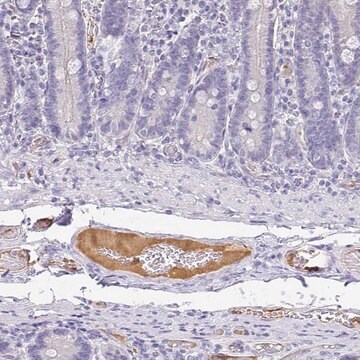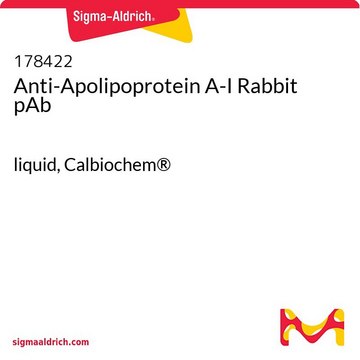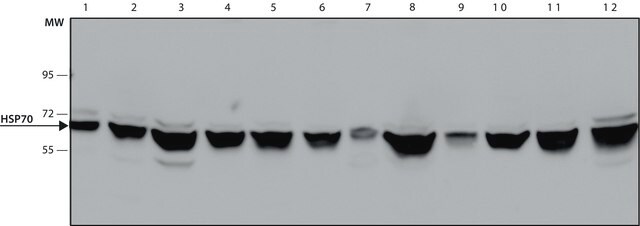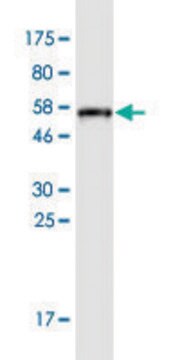MABS2046
Anti-ApoB Antibody, clone 2G11
clone 2G11, from mouse
Synonim(y):
Apolipoprotein B-100
About This Item
Polecane produkty
pochodzenie biologiczne
mouse
Poziom jakości
forma przeciwciała
purified immunoglobulin
rodzaj przeciwciała
primary antibodies
klon
2G11, monoclonal
reaktywność gatunkowa
hamster, mouse, rat
spodziewany brak reakcji z
human
opakowanie
antibody small pack of 25 μg
metody
ELISA: suitable
western blot: suitable
izotyp
IgG1κ
numer dostępu NCBI
numer dostępu UniProt
Warunki transportu
ambient
docelowa modyfikacja potranslacyjna
unmodified
informacje o genach
mouse ... Apob(238055)
Opis ogólny
Specyficzność
Immunogen
Zastosowanie
Signaling
Western Blotting Analysis: A representative lot detected ApoB in Western Blotting applications (Nguyen, A.T., et. al. (2006). Biochem Biophys Acta. 1761(2):182-5; Cheng, D., et. al. (2016). J Biol Chem. 291(45):23793-23803).
ELISA Analysis: A representative lot detected ApoB in ELISA applications (Nguyen, A.T., et. al. (2006). Biochem Biophys Acta. 1761(2):182-5).
Jakość
Western Blotting Analysis: 4 µg/mL of this antibody detected ApoB in 10 µg of rat serum.
Opis wartości docelowych
Postać fizyczna
Przechowywanie i stabilność
Inne uwagi
Oświadczenie o zrzeczeniu się odpowiedzialności
Nie możesz znaleźć właściwego produktu?
Wypróbuj nasz Narzędzie selektora produktów.
Kod klasy składowania
12 - Non Combustible Liquids
Klasa zagrożenia wodnego (WGK)
WGK 1
Temperatura zapłonu (°F)
does not flash
Temperatura zapłonu (°C)
does not flash
Certyfikaty analizy (CoA)
Poszukaj Certyfikaty analizy (CoA), wpisując numer partii/serii produktów. Numery serii i partii można znaleźć na etykiecie produktu po słowach „seria” lub „partia”.
Masz już ten produkt?
Dokumenty związane z niedawno zakupionymi produktami zostały zamieszczone w Bibliotece dokumentów.
Nasz zespół naukowców ma doświadczenie we wszystkich obszarach badań, w tym w naukach przyrodniczych, materiałoznawstwie, syntezie chemicznej, chromatografii, analityce i wielu innych dziedzinach.
Skontaktuj się z zespołem ds. pomocy technicznej








